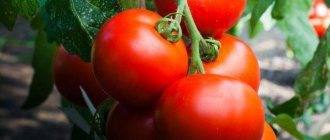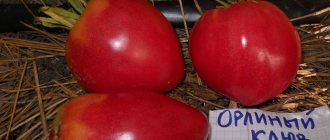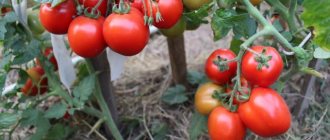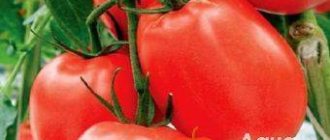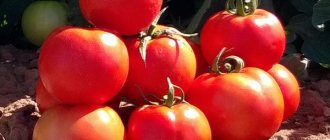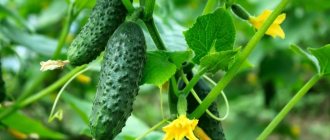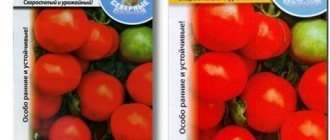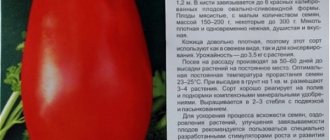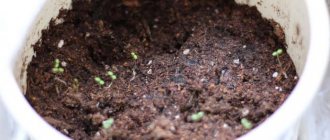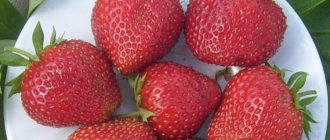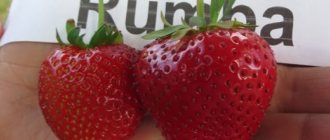Strawberries are considered one of the most sought-after and popular garden crops among most gardeners for a reason. Darenka's strawberry stands out not only because of its original Russian name. The photo and early ripening period, and quite good general characteristics speak for themselves. The Darenka strawberry was bred by one person, namely I.I. Bogdanova in the Sverdlovsk region. The parent varieties for this type of berry were Festivalnaya and Rusanovka.
Description
Darenka is an early variety of non-remontant strawberry. It has erect, medium-sized bushes, with large and wide, slightly wrinkled and densely pubescent leaves that bend slightly and bend downwards. The petioles of the leaves are medium. The flowers of the Darenka strawberry variety are bisexual, simultaneously blooming, white, located on numerous compact peduncles, strong, non-lodging, rising above the leaves. The mustache is light red in color, medium in thickness, and is formed in moderate quantities.
Darenka's berries ripen at the same time, they are large (from 8 g), a classic blunt-conical shape, but with a pronounced neck and smooth shiny skin of a dark red color. The seeds are few in number, slightly embedded in the pulp. The berries come off easily when picked, and the cups are separated from the berries without any problems.
Darenka berries are sweet, with a slight sourness. The tasting rating of the taste of this variety is 4.4 points out of 5 possible. The pulp of the berries is tender, fleshy, and has a pronounced aroma. Despite their softness, the berries can withstand transportation in specially prepared packaging. The yield of the variety is high; there is no periodicity in fruiting. From 1 bush you can collect 1.2-1.5 kg of tasty and juicy berries.
Reviews from summer residents and gardeners
Reviews from summer residents and farmers vary. Some people consider Darenka to be an unremarkable, ordinary variety, with a taste that is no different from other varieties.
But most people fell in love with it for its fresh taste, early ripening and high yield. Here's what gardeners say:
Irina: “I tried to plant it at my dacha. All my family said that strawberries are very tasty and sweet. I really liked it too.”
Olga: “I had a wonderful harvest, the first time we collected it in buckets. While they were taking her home, nothing was wrinkled and there was no water, they brought her whole!”
Alexandra: “A very good variety, tasty, and what a aroma! True, it doesn’t produce a lot of mustache, but there are no problems with their constant removal.”
Elena: “I’ve been growing for 5 years now. Last year I replanted it because the berries became smaller. But the bushes tolerated the replanting well, and I hope to harvest even more this year.”
Anna: “An unpretentious berry that grows well. I fertilize and water, the harvest is very rich and my grandchildren like these strawberries.”
Advantages and disadvantages of the variety
Like every variety of strawberry, the Darenka variety has its pros and cons.
| Advantages of the variety | Disadvantages of the variety |
| It is not a remontant variety, so in 1 season you will be able to get only 1 harvest of berries. |
As you can see, the Darenka variety has many more advantages than disadvantages, which suggests that this is a variety that is worthy of taking its place in any garden plot.
Reproduction methods
Like other varieties of strawberries, Darenka reproduces by mustaches and division of bushes; you can also grow it from seeds. The choice of method depends on the capabilities and personal preferences of the gardener.
Usami
In order to propagate strawberries with mustaches, you need to mark the healthiest and most fertile young (no older than 2-3 years) bushes, and the next year, when they grow mustaches, dig them in without tearing them off from the mother plants. You need to take for reproduction only the mustaches of the first order, and not the subsequent orders and the largest ones. At the end of summer, when they take root, they need to be dug up and transplanted to new beds. You can do this in the spring.
Dividing the bush
When transplanting, young Darenka strawberry plants can be divided into parts and each planted separately. You need to divide carefully and so that a vegetative bud remains on each piece.
History of variety development
This garden strawberry is the fruit of Russian selection; it was bred in Sverdlovsk at the local horticultural breeding station. The author and originator of Darenka strawberries is breeder I. I. Bogdanova. To obtain a new variety, Festivalnaya and Rusanovka strawberries were crossed.
The new variety was included in the Federal State Budgetary Institution "State Variety Commission" in 2004
and is zoned for cultivation in the central regions of Russia, the Volga region, Western and Eastern Siberia, and in the middle zone. But according to reviews from gardeners, Darenka strawberries can be grown almost everywhere in Russia.
Photo of Darenka strawberries
Growing from seeds
Another method that can be used to propagate Darenka strawberries is to grow them from seeds. It can be divided into several stages.
Preparing seeds for sowing
Before you start planting seeds, they need to be prepared: germinate in damp tissue and stratify at low positive temperatures. These agrotechnical measures will help the seeds germinate faster, become stronger and more hardened.
Sowing time
You can sow Darenka seeds already in February-March, then small plants will have time to grow from them by the time it gets completely warmer. You can sow seeds earlier, but in this case they will have to be illuminated.
Sowing in peat tablets
You can grow strawberry seeds not only in soil, but also in peat tablets. Before sowing, the tablets need to be placed in a tray, filled with warm water, and when they swell, sow 1-3 seeds in the center of each of them.
Sowing in the soil
The easiest way to grow Darenka strawberries is in containers filled with fertile soil. Sowing it is very simple - just put the seeds on a moistened surface, cover with film and place in a warm and bright place.
Picking sprouts
When young strawberry plants have 3 leaves, they must be transplanted into individual containers of sufficient volume (at least 5 by 5 cm). Picking is carried out in order to plant plants that are sown too densely and provide them with the necessary space for growth.
Why don't the seeds germinate?
Strawberry seeds generally take a long time and difficult to germinate, and if they were not prepared, then this process may drag on. Or they will not have enough heat and light, so when growing seedlings from seeds you need to monitor this.
Attention! More information on growing strawberries from seeds.
Spring feeding
The timing of fertilization directly depends on the age of the strawberries. Young plants that were planted in the ground in the fall are fed exclusively with mineral compounds. Fertilizers are applied at the very beginning of the formation of flower stalks; as a rule, work is carried out in April.
Adult plants are fertilized for the first time when new leaves appear. The second time additional nutrients are added before flowering, in May. The third feeding occurs at the end of May-beginning of June. At this time, the process of fruit formation begins.
Since the area is well fertilized before planting strawberries, no fertilizer is applied to this berry crop in the first year after planting.
In the following years, strawberry bushes should be fertilized at least three times a year.
After the snow has melted and the plantation has been cleared of plant debris, you can add azofoska, nitrophoska or nitroammophoska. If you choose nitroammophoska (it is more effective than the first two and lasts longer in the kidney, but also has a certain level of aggressiveness): dilute 20 g of the drug in a bucket of water, add at least 1 liter of solution to each bush.
The next feeding is carried out with a solution of organic fertilizer (infusion of mullein or bird droppings).
After fruiting has finished, fertilizer containing potassium and phosphorus should be applied to the strawberries.
The timing of fertilization directly depends on the age of the strawberries. Young plants that were planted in the ground in the fall are fed exclusively with mineral compounds. Fertilizers are applied at the very beginning of the formation of flower stalks; as a rule, work is carried out in April.
Adult plants are fertilized for the first time when new leaves appear. The second time additional nutrients are added before flowering, in May. The third feeding occurs at the end of May-beginning of June. At this time, the process of fruit formation begins.
Landing
Seedlings of the Darenka variety obtained on your farm or purchased will need to be planted in the ground. Here's how to do it.
How to choose seedlings
Good strawberry seedlings should be large, healthy, with a well-developed root system, and rich green leaves. Sluggish, sick and frail seedlings are not suitable for planting.
Site selection and soil preparation
It is better to choose a place on the plot for Darenka strawberries that is sunny, warm, protected from winds and drafts. As for the soil, any type of soil is suitable for this crop, but it is still better if it is fertile, loose, airy soil. Acidic soils are not suitable for strawberries.
Planting scheme
In order for strawberry plants to feel normal and bear fruit well, each of them must have a sufficient feeding area. Therefore, seedlings need to be planted at a distance of at least 50 cm from each other.
Strawberry Darenka - agricultural technology for growing the variety
You can plant strawberry bushes in a permanent place both in spring and in autumn. When planting Darenka strawberries in spring, the optimal timing for such a procedure is the last ten days of April - the first ten days of May; when planting plants in autumn, it is better to carry out this procedure in the last ten days of August - the first ten days of September.
THIS IS INTERESTING!
• Article about the best varieties of strawberries for Siberia
Care
You need to care for Darenka variety strawberries in the same way as plants of other varieties, that is, water, fertilize, and treat them against diseases.
Spring period
In the spring, as soon as it gets warmer, you need to remove the mulch from the bushes that protected them in winter. If it gets colder, you can cover the strawberries with film.
Watering and mulching
Both newly planted plants and mature bushes need to be watered so that they can show all that they are capable of. To retain moisture, it is better to mulch the soil around them.
Attention! More detailed information on caring for strawberries.
Fertilizing by month
The timing of feeding strawberry plants depends on their age. Young bushes planted in autumn can be fed only with mineral fertilizers.
| Feeding | Young strawberry | Adult strawberry |
| First feeding | In April, with the beginning of the formation of flower stalks | In April, with the appearance of young foliage |
| Second feeding | In May, before flowering | |
| Third feeding | In May-June, when the fruits begin to form |
Attention! More detailed information on how to feed strawberries.
Preparing for winter
Although the Darenka variety strawberries are winter-hardy, in cold regions they need to be covered, especially young plants. This should be done when the first frost occurs.
Attention! Detailed information on how to properly cover strawberry bushes and with what.
How to care
You need to start watering Darenka strawberries at the end of April. Approximately 10-12 liters of water will be needed per 1 m2. However, it should not be cold. In summer, during extreme heat, it is worth watering the plants 3-4 times a week.
And in the fall, if it is dry, then moisten the soil once a week. It is best to irrigate the plant in the morning. In this case, you need to water so that drops of water do not fall on the leaves and inflorescences. It is also worth learning more about how the Honey variety is watered, and for this you should follow the link and look at the photo.
In the first year after planting strawberries, there is no need to fertilize them. You can fertilize from the second year. Do this 3 times a year. Early in the spring, when the area has been tidied up and the leaves have been trimmed, it is worth adding nitroammophoska to the soil.
To obtain a solution, take the drug in an amount of 20 g and dilute it in 10 liters of water. Mineral fertilizer can be replaced with organic fertilizer.
To do this, you need to take mullein and water in a ratio of 1:10 or chicken manure in a ratio of 1612. Apply 0.5 liters of solution to each plant. It is best to fertilize strawberries after watering and loosening the soil. Here's how to fertilize the Gigantella strawberry variety, and what chemicals should be used. This information will help you understand.
Strawberry diseases
Like any other strawberry varieties, Darenka is also susceptible to diseases and pests. Most often, the fruits rot and dry out, and the following ailments can be the cause:
- fruit, root and gray rot,
- powdery mildew,
- brown, brown and white spots (septoria),
- jaundice,
- fusarium, late blight and verticillium wilt.
To prevent the development of these diseases, it is necessary to strictly adhere to the rules of agricultural technology for growing strawberries. You can also carry out preventive treatments of the area. This should be done at the beginning and end of the growing season. For these purposes, it is worth using fungicidal preparations, which are sold in special stores. It is also worth learning more about the Queen Elizabeth remontant strawberry, and learning about the conditions for its cultivation.
- Miroslava, 34 years old: “Darenka has been growing in my dacha for 4 years now. Next year I’m going to transplant it to a new place, as I began to notice that the fruits are becoming smaller. But at the same time, their taste only improves. The variety's yield is average, since I can get an average of up to 1 kg of berries from one bush. They can be stored in a cool place for no more than 3-4 days.”
- Larisa, 47 years old: “I bought the Darenka variety at a nursery. I took only 30 bushes, but in 3 years I was able to get a whole strawberry plantation. This is due to the fact that reproduction by antennae occurs very quickly. But they must be removed without fail. Otherwise, the fruits will begin to shrink. The variety is not particularly demanding in care, but it is simply necessary to apply fertilizers and water the bushes regularly.”
And here you can read about existing reviews of Festivalnaya strawberries.
Darenka is a strawberry variety that is loved by many gardeners for its early ripening period. Another advantage of the variety is its tasty and large berries. They are perfectly stored and do not lose their presentation. If you care for the plant carefully and regularly, it is quite possible to increase the yield and quality of the harvested fruits.
READ MORE: How to store garlic after digging at home
Diseases and control methods
Cultivated plants of this variety can be affected by diseases, so gardeners who decide to grow Darenka need to know what causes it and how to deal with it.
| Disease | How and with what to fight |
| White, gray rot | Preventive measures and treatment of infected bushes with fungicides |
| Black rot | Remove infected berries and burn them |
| Root rot | Dig up and burn diseased bushes, treat the soil with fungicides |
| Late blight rot | Compliance with agricultural cultivation techniques, treatment of land and seedlings with fungicides |
| Powdery mildew | Transplant the strawberries to a new place, disinfect the soil |
| Fusarium wilt | At the initial stage of infection, treat the bushes with fungicides |
| White, black spotting | Treat bushes with copper preparations, remove severely affected ones |
| Brown spot | After harvesting, treat plants with Fitosporin |
Attention! Learn more about strawberry diseases and how to combat them.
Pests and ways to combat them
Strawberries can be affected by many pests, for example, weevils, strawberry leaf beetles and mites, spider mites, chafer larvae, mole crickets, aphids, nematodes, tobacco thrips, slugs, bronze beetles and whiteflies. They cause harm to bushes and can destroy a significant part of the crop, so agrochemicals and folk remedies are used to combat them.
Attention! About strawberry pests and methods for their destruction.
Features of growing in pots
In addition to traditional cultivation in garden beds, you can try growing strawberries of this variety using a new, but already quite popular technology - in pots. Growing berries using this method has its own characteristics, which should be known to those gardeners who decide to use it.
Attention! More information on growing strawberries in pots.
